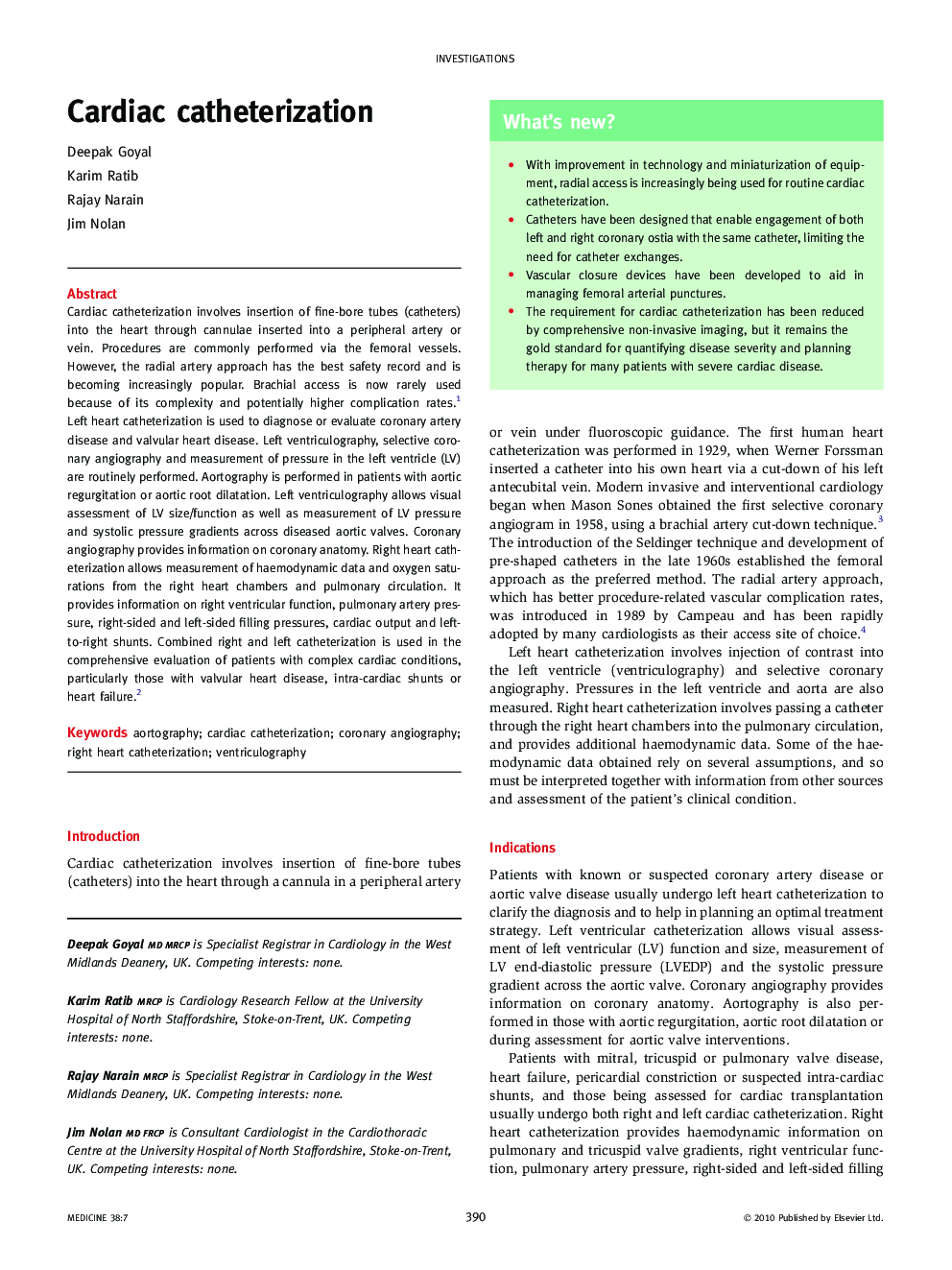| کد مقاله | کد نشریه | سال انتشار | مقاله انگلیسی | نسخه تمام متن |
|---|---|---|---|---|
| 3805169 | 1245158 | 2010 | 5 صفحه PDF | دانلود رایگان |

Cardiac catheterization involves insertion of fine-bore tubes (catheters) into the heart through cannulae inserted into a peripheral artery or vein. Procedures are commonly performed via the femoral vessels. However, the radial artery approach has the best safety record and is becoming increasingly popular. Brachial access is now rarely used because of its complexity and potentially higher complication rates.1 Left heart catheterization is used to diagnose or evaluate coronary artery disease and valvular heart disease. Left ventriculography, selective coronary angiography and measurement of pressure in the left ventricle (LV) are routinely performed. Aortography is performed in patients with aortic regurgitation or aortic root dilatation. Left ventriculography allows visual assessment of LV size/function as well as measurement of LV pressure and systolic pressure gradients across diseased aortic valves. Coronary angiography provides information on coronary anatomy. Right heart catheterization allows measurement of haemodynamic data and oxygen saturations from the right heart chambers and pulmonary circulation. It provides information on right ventricular function, pulmonary artery pressure, right-sided and left-sided filling pressures, cardiac output and left-to-right shunts. Combined right and left catheterization is used in the comprehensive evaluation of patients with complex cardiac conditions, particularly those with valvular heart disease, intra-cardiac shunts or heart failure.2
Journal: Medicine - Volume 38, Issue 7, July 2010, Pages 390–394